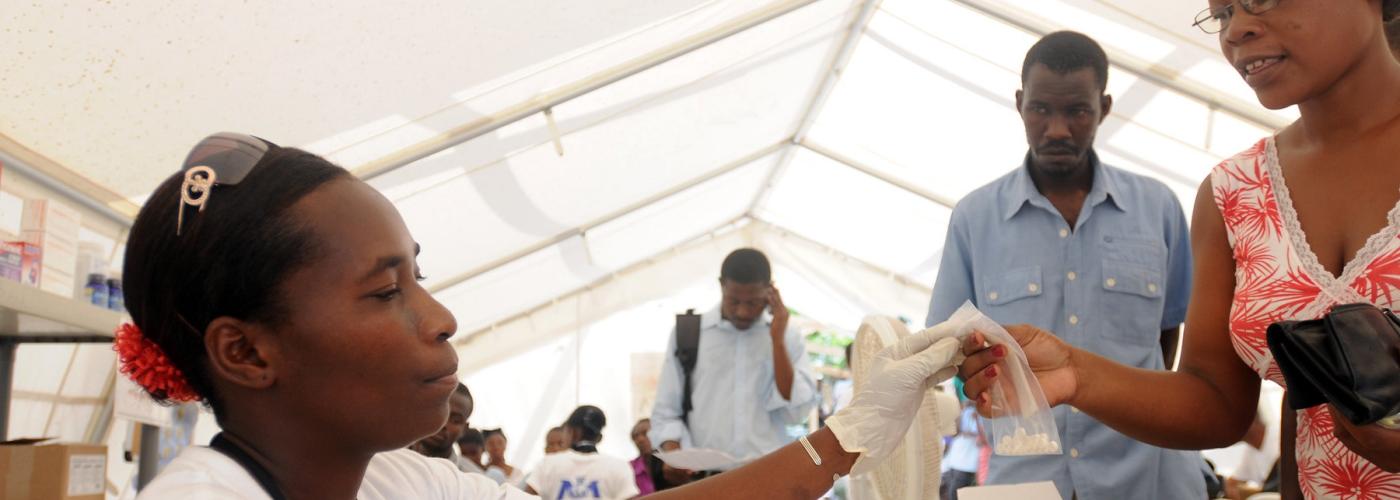This February, Marketlinks explores some key considerations for promoting local and regional manufacturing of health products
Image

Stockouts and shortages of quality-assured medical products — including those required to prevent maternal and child deaths, and combat and control infectious disease threats — are still common in many countries despite being critical for saving lives. The COVID-19 pandemic has highlighted global health supply chain vulnerabilities, including an overreliance on a small number of suppliers for key active pharmaceutical ingredients, as well as on a large concentration of pharmaceutical manufacturing in Asia. In low- and middle-income countries (LMICs), at least one in ten medical products are estimated to be substandard or falsifiedWHO. https://www.who.int/en/news-room/fact-sheets/detail/substandard-and-falsified-medical-products. 31 January 2018, with the true burden likely much greater, further increasing antimicrobial resistance, and jeopardizing the health of the public. In line with the Agency’s goal to “localize” its investments across our development programs, USAID endeavors to support local and regional manufacturing of safe and effective health products in LMICs to diversify the supply base and promote greater access to quality-assured medicines and health products that are closer to the end-user.
The health needs of a population cannot be met without the timely access to medical products, and the systems that ensure their quality, regulate supply, and promote their safe and appropriate use. Strong pharmaceutical systems are necessary for ensuring high-quality health care, particularly for the most-vulnerable populations. USAID works with government entities, including National Medicines Regulatory Authorities, and private sector organizations to strengthen their regulatory system and pharmacy practices, to ensure sustainable access to and appropriate use of safe, effective, affordable, quality-assured medical products.
USAID’s decades of experience working with local manufacturers in LMICs to improve the quality of their manufacturing process, strengthen regional and national local regulatory environments, and support local wholesalers in their quality management system, has increased access to quality-assured medical products and improved health outcomes. This involves providing technical assistance to help manufacturers improve their systems and processes for producing quality products that meet domestic and international standards (such as the WHO’s Prequalification Program), assess demand, and improve business planning to inform market entry decisions and improve commercial viability.
Such support has been critical to improving equitable access to life-saving medicines and products during the current COVID-19 pandemic. For example, in Pakistan, USAID’s technical assistance helped domestic manufacturers meet international quality standards for personal protective equipment (PPE) and reduced the price of N95 masks by more than 95 percent domestically. In South Africa, USAID supported small- and medium-sized enterprises to stimulate local production of essential COVID-19 supplies and PPE, generating over 1.9 million pieces of PPE, creating 426 employment opportunities, and leveraging US$1.3 million in co-financing to sustain and scale their businesses.
As the demand increases for access to health products in countries with less mature regulatory systems, the evolving pharmaceutical landscape requires more focused technical assistance to manufacturers and regulatory authorities to ensure their quality, safety, and efficacy. National and international investments for increasing and strengthening the capacity for local manufacturing of quality-assured products need to be strategic, market-based, and carried out with multi-sectoral coordination.
COVID-19 has renewed global attention and resources, opening up an immediate opportunity to strengthen and focus efforts around local and regional manufacturing. This month’s Marketlinks feature will provide a forum to share achievements to date, resources, and lessons learned in order to shape future directions.
The views in this article are those of the authors and do not necessarily represent the views of USAID nor the United States Government.

